Welcoming Congregation
Shirley Harris had always been a woman of deep faith. Upon moving to the small town of Oakridge, she and her family quickly became members of St. Andrews Church, drawn in by the welcoming congregation and the charismatic Pastor Robert. Shirley felt a renewed sense of belonging and hope for her family’s spiritual growth. However, as she became more involved, a lingering unease began to surface, suggesting that something was amiss within the vibrant community.


Despite the warmth of Sunday services and the inspiration drawn from Pastor Robert’s personal anecdotes, Shirley sensed an invisible barrier between the congregation and the altar, rooted in unspoken traditions. Intrigued and unsettled, she began to question why women were excluded from the altar—a practice unfamiliar to her from previous churches. Although she initially dismissed her concerns as mere cultural differences, her discomfort persisted, driving her to observe and contemplate the deeply ingrained customs of her new church.
Handling Sacred Items
At St. Andrews, an unusual rule prohibited women from approaching the altar, a tradition Pastor Robert claimed was rooted in preserving the sanctity of the space. His unwavering conviction swayed many in the congregation to accept this practice without question. Although Shirley found it peculiar, she initially dismissed it as an old-fashioned custom.
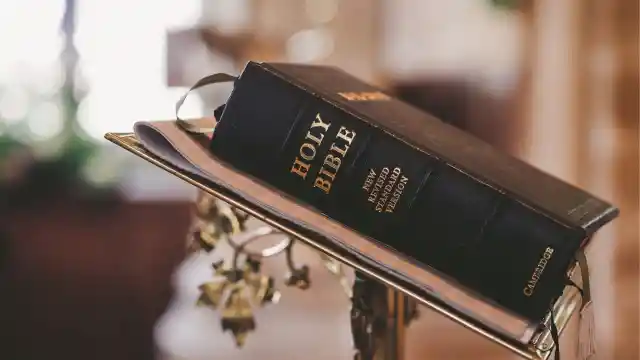

As time passed, Shirley noticed the enforcement of this rule: men were consistently the ones preparing the altar and handling sacred items, while women, including herself, were limited to arranging flowers and preparing refreshments. This division felt innocuous at first but gradually sparked a sense of injustice within her. Confiding in a few close friends, most shrugged off her concerns, accepting the status quo. Only Sarah echoed Shirley's discomfort, leading them to discuss the rule more frequently. Each conversation fueled Shirley's determination to explore its origins, igniting her quest for truth in a tradition that seemed more complex than it appeared.
Flourishing At School
As time passed, Shirley and her family adapted to their new life in Oakridge. Tom started working at a local factory, while their children, Amy and Jacob, flourished at school. The family became regular participants in community events, forging connections with neighbors and church members. St. Andrews quickly emerged as a cornerstone of their social life, providing them with a sense of stability and belonging.
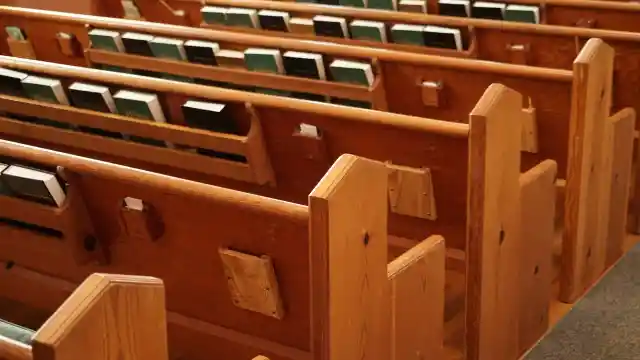
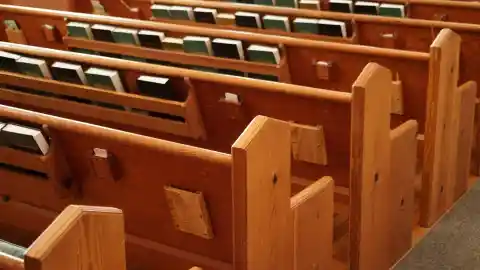
Shirley found joy in volunteering at the church, where she joined the women’s group, participated in bake sales, and helped organize charity events. Although her contributions were welcomed, she couldn’t shake off the nagging feeling about the altar rule. Each Sunday, witnessing the men approach the altar with ease left her feeling uneasy. It wasn't just about access; it represented a larger issue. This realization ignited a desire within her to challenge the existing norms, advocating for change not only for herself but for all women in the community.
Far And Wide
The annual church festival was a cherished event for the Oakridge community, attracting visitors from far and wide. Eager to help, Shirley volunteered to assist with decorations, delighted to add to the festive atmosphere. The church grounds buzzed with excitement, adorned with vibrant banners and sparkling lights, while stalls overflowed with homemade treats. It was a time for joy and unity, celebrating the spirit of togetherness.


As preparations unfolded, Shirley attempted to hang garlands near the altar but was gently redirected by a deacon, reminding her of the established boundaries. While she understood the need for rules, she felt a pang of frustration at being excluded from such a central and meaningful space. Later that evening, her curiosity deepened as she pondered the altar's significance. Determined to seek clarity, Shirley resolved to ask Pastor Robert for an explanation of the tradition that seemed to diminish her contributions within the church.
Prioritizing His New Job
After the festival, Shirley's curiosity intensified. During dinner one evening, she raised the topic of a church rule with Tom, hoping for clarity. While he acknowledged her frustration, he dismissed it as an outdated custom, prioritizing his new job and their children's happiness over the church's peculiar traditions. To him, these customs seemed trivial compared to their family's well-being.
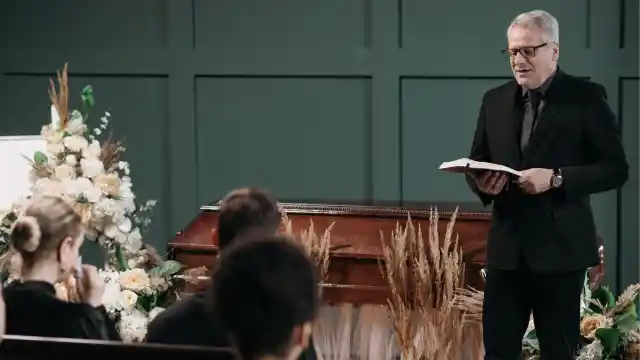
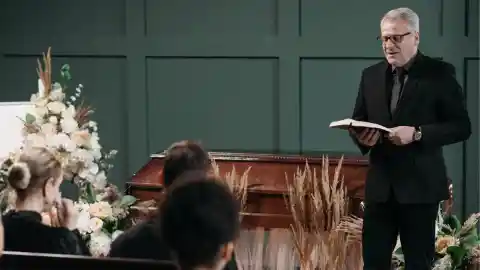
For Shirley, however, the rule felt like a deliberate barrier that hinted at something deeper. Tom's indifferent response only strengthened her resolve to dig deeper. Determined to find answers, she decided to approach Pastor Robert after Sunday service. Carefully framing her question to avoid confrontation, she was met with a polite yet rehearsed explanation about tradition and reverence. His response left her with more questions than before, prompting her to resolve that her inquiry was far from over.
To Dig Deeper
Shirley was plagued by disturbing dreams centered around the church. In one particularly vivid vision, she found herself at the altar, unable to move forward due to an unseen force restraining her. This dream filled her with an overwhelming sense of urgency and frustration, leaving her unsettled each morning. It felt as though her subconscious was urging her to uncover the truth behind the church's strict regulations.


These dreams fueled her determination to dig deeper. She confided in Sarah, who shared her own feelings of unease. Together, they dissected the dream's symbolism, interpreting it as a warning that something was off. With Sarah's support bolstering her confidence, Shirley became driven by a sense of moral duty to unveil the truth for the sake of the women in their congregation. Her dreams ignited a passion in her, and she resolved to confront whatever obstacles lay ahead in her quest for answers.
Feeling Unsatisfied
Shirley decided to confront Pastor Robert after a Sunday service, seeking clarity about her discomfort with the altar rule. He listened attentively as she voiced her concerns, explaining that the tradition was deeply rooted in reverence for the sacred space and had been upheld for generations. Despite his calm demeanor, his vague response left Shirley feeling unsatisfied, prompting her to ask for more information regarding the rule's origins.
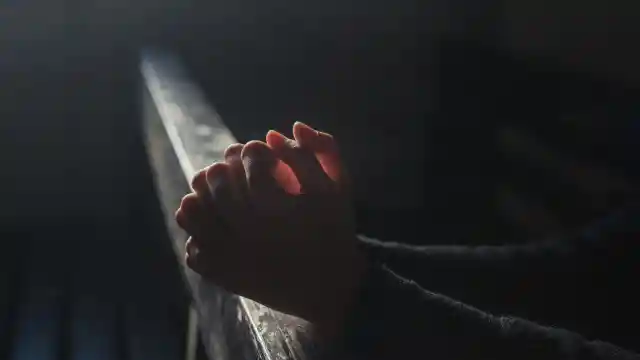

Pastor Robert's tone changed, becoming more defensive as he insisted that tradition was paramount and suggested that questioning it could disturb the church's harmony. This only intensified Shirley's suspicions. Feeling dismissed, she realized that to uncover the truth, she needed to dig deeper than the official narratives. Convinced that there was more to the rule than mere tradition, she began strategizing her next steps, determined to unveil what she suspected was a hidden agenda.
Muted Conversation
As Shirley pressed for answers, she began to notice the anxious glances and muted conversations among the congregation. It felt as if everyone was privy to a secret she was not meant to know, creating an atmosphere thick with tension. The church, which had once felt like a welcoming community, now seemed shrouded in mystery. This unease only fueled Shirley's resolve to uncover the truth.


Her relentless inquiries drew mixed responses; some members started to avoid her, while others offered sympathetic but hesitant replies. Shirley was baffled by the uproar surrounding her seemingly innocent questions about tradition. Yet, the palpable fear suggested that something significant lay hidden beneath the surface. Despite feeling increasingly isolated, she documented her interactions and observations, convinced that the resistance she faced was a sign she was getting closer to revealing the truth. The murmurs and whispers only intensified her determination to expose what was lurking in the shadows.
Underlying Motives
Shirley discovered an unexpected ally in Sarah, a fellow churchgoer who shared her discomfort with the altar rule. Both women had always found the tradition peculiar, yet neither had dared to voice their concerns. One afternoon over coffee, Sarah revealed her longstanding doubts about the rule and its underlying motives. This candid exchange sparked a partnership founded on shared curiosity and a determination to seek the truth.
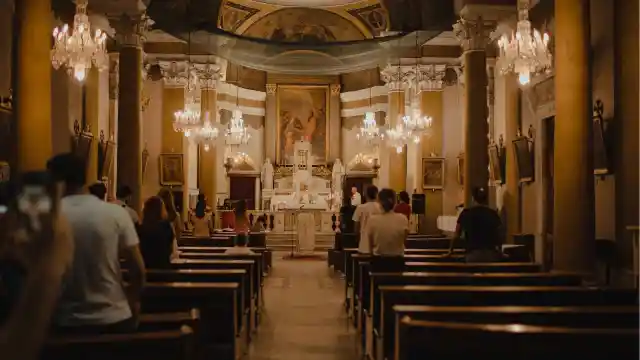
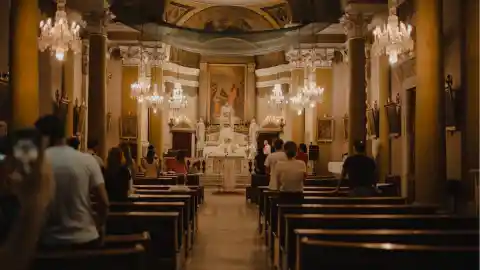
With Sarah's extensive experience at St. Andrews, she brought valuable insights to their investigation. Together, they noticed suspicious patterns: certain members were overly protective of the altar, while others swiftly changed the subject when the rule was mentioned. Feeling empowered by Sarah's support, they discreetly questioned older church members about the rule's origins. Although many were hesitant to share, a few hinted at buried secrets, intensifying their resolve to uncover the truth despite potential risks.
Sunday Service
After a Sunday service, Shirley stumbled upon a small, locked door behind the altar, one she had never noticed before. Curiosity piqued, she couldn't shake the feeling that it concealed secrets tied to the church's longstanding rule prohibiting women from approaching the altar. The more she pondered, the more convinced she became that uncovering the mystery behind the door was essential.

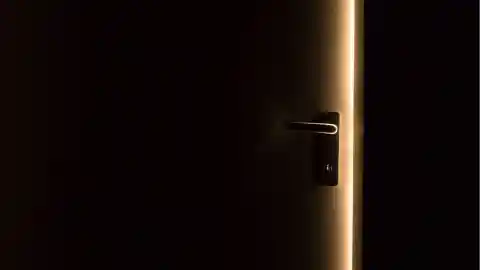
Sharing her discovery with her friend Sarah, they both became determined to investigate further. Observing who accessed the door, they noticed that only a select few men, including Pastor Robert and senior deacons, ventured near it. This fueled their belief that the door held significant meaning. Rather than directly asking for access, they decided to wait for a moment when the church would be empty, feeling a mix of excitement and trepidation as they approached what could be a pivotal revelation.
The Journal
While helping clean the church library, Shirley stumbled upon an old journal tucked away on a dusty shelf. It belonged to a previous pastor who had served at St. Andrews decades ago. Intrigued, she took it home to read, hoping it might shed some light on the altar rule and the church’s history. The journal was filled with mundane entries about church life, but as she read on, she found references to "the secret" and "the necessity of the rule." The cryptic language in the journal piqued Shirley's curiosity even more. The pastor had mentioned "protecting the sanctity" and "guarding against the corruption of the sacred space."
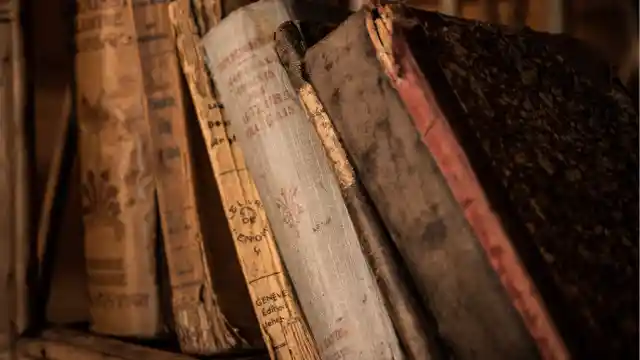

These vague references suggested that the altar rule was more than just a tradition; it was a deliberate measure to hide something. Shirley shared the journal with Sarah, and they poured over it together, analyzing each entry for clues. As they delved deeper into the journal, they discovered mentions of financial irregularities and scandals that had been covered up. It became clear that the altar rule was part of a broader scheme to maintain control and conceal wrongdoing. This new information reinforced their determination to uncover the truth, even as it became evident that they were dealing with something much larger than they had anticipated.
Secrets In The Pages
The journal was filled with mundane entries about church life, but as Shirley read on, she found references to "the secret" and "the necessity of the rule." The cryptic language made her even more determined to uncover the truth. Each reference seemed to hint at a dark past that had been carefully hidden away, and the more she read, the more convinced she became that the altar rule was a smokescreen for something much more sinister. Shirley and Sarah continued to analyze the journal, cross-referencing its entries with their observations and conversations with older church members. They discovered patterns of behavior and decisions that pointed to systemic corruption within the church leadership.


Financial discrepancies, questionable land deals, and allegations of abuse were alluded to in the journal’s pages. These revelations painted a troubling picture of a church more concerned with protecting its image than its congregation. As the pieces of the puzzle began to come together, Shirley and Sarah realized that they were on the verge of exposing a scandal that could shake the very foundations of St. Andrews. The weight of their discovery was daunting, but they knew they couldn’t turn back now. They decided to gather as much evidence as possible before confronting the church leadership, determined to bring the truth to light and seek justice for those who had been wronged.
Increasing Tension
Shirley's persistent questions started to draw attention. Pastor Robert became noticeably colder towards her, and some members of the congregation began avoiding her altogether. The once warm and welcoming environment of St. Andrews started to feel hostile. Shirley could sense the tension rising, and it became clear that her inquiries were making people uncomfortable. Despite the growing opposition, she remained steadfast in her quest for the truth. Sarah, too, felt the strain. Friends she had known for years started distancing themselves, wary of being associated with the controversy.
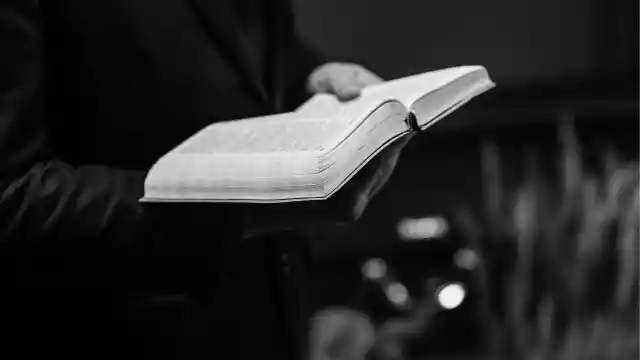
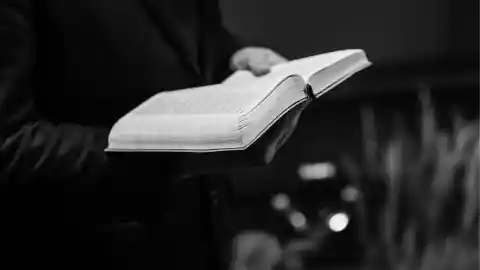
The church leadership, sensing a threat, subtly increased their scrutiny of both women. They received polite but firm reminders about respecting church traditions and the importance of unity. The underlying message was clear: stop asking questions. Despite the pressure, Shirley and Sarah refused to back down. They continued to gather evidence, each new piece reinforcing their belief that they were on the right track. The tension only served to deepen their resolve, as they realized that the pushback they were experiencing was a sign that they were getting closer to uncovering the truth. They knew they had to proceed carefully, but there was no turning back now.
The Warning
One evening, Shirley received an anonymous note slipped under her door. It warned her to stop asking questions and to respect the traditions of St. Andrews. The note was typed, with no indication of who might have sent it, but the threat was clear. Shirley felt a chill run down her spine as she read the words. Someone was watching her closely, and they wanted her to cease her investigation immediately. Sarah received a similar note, and the two women discussed their next steps. They knew that backing down would mean letting the truth remain buried, but they also understood the potential danger they were facing.


The warnings only confirmed their suspicions that something was seriously wrong within the church. They decided to proceed with caution, aware that they were treading on dangerous ground. The notes served as a wake-up call for Shirley and Sarah. They took additional precautions, being more discreet in their conversations and careful about whom they trusted. The sense of urgency grew stronger, driving them to uncover the truth before it could be completely hidden away. The warnings, rather than deterring them, strengthened their resolve to expose the corruption and bring justice to those who had been harmed.
The Investigation
Shirley and Sarah decided to investigate further. They started by talking to older members of the church who might remember the origins of the rule. Many were reluctant to speak, but a few hinted at dark secrets best left buried. These conversations revealed a pattern of fear and silence that had persisted for decades. It became clear that the altar rule was part of a larger effort to keep certain truths hidden from the congregation. With each new piece of information, Shirley and Sarah grew more determined. They began compiling a dossier of evidence, including testimonies, historical records, and the contents of the old journal.


The picture that emerged was one of systemic corruption and abuse, covered up by a facade of tradition and piety. The altar rule was merely a smokescreen to distract from the real issues plaguing the church. The investigation was not without its challenges. They encountered resistance and hostility from those who were loyal to the church leadership, but they also found support from a few brave individuals willing to speak out. The more they uncovered, the more they realized the depth of the church’s corruption. They knew they were taking a significant risk, but the stakes were too high to ignore. They pressed on, driven by a sense of justice and the hope of exposing the truth.
Family Concerns
Tom grew worried about Shirley's obsession with the church's altar rule. He urged her to let it go, fearing for their family's standing in the community. Tom's concerns were valid; the investigation was putting a strain on their family life. Shirley's focus on uncovering the truth often left her distracted and preoccupied, and Tom worried about the potential repercussions of challenging such a deeply rooted tradition. Shirley understood Tom’s fears, but she couldn’t shake the feeling that she was on the brink of something important. She tried to reassure him, explaining that this was about more than just a rule; it was about justice and truth.


Tom listened, but his anxiety was palpable. He supported her in principle but was deeply concerned about the practical implications for their family. Despite the tension, Shirley found strength in Tom’s concern. She realized the importance of balancing her investigation with her responsibilities at home. She became more mindful of her family’s needs, ensuring that her quest for the truth didn’t overshadow her role as a wife and mother. This balance was difficult to maintain, but it was essential for keeping her family united and supportive of her efforts.
The Phone Call
Late one night, Shirley received a phone call from an unknown number. The voice on the other end was a woman who claimed to have once been a member of St. Andrews. She had left the church under mysterious circumstances years ago but had kept a close watch on its activities since then. The woman, who identified herself as Emily, spoke in hushed tones, conveying a sense of urgency. Emily explained that she had crucial information about the altar rule and its origins. She had witnessed events that had been covered up by the church leadership, events that involved financial misconduct and abuse of power. Shirley listened intently, feeling a mix of excitement and apprehension. Here was someone who could potentially corroborate their suspicions and provide concrete evidence to support their investigation.


As Emily recounted her experiences, Shirley took notes, documenting every detail. Emily's testimony painted a disturbing picture of a church leadership that had exploited its authority for personal gain and had silenced anyone who dared to speak out. It was clear that the altar rule was a tool of control, used to maintain secrecy and suppress dissent within the congregation. After the call ended, Shirley and Sarah discussed their next steps. Emily's testimony had added weight to their investigation, but they knew they needed more evidence to substantiate their claims. They decided to arrange a meeting with Emily in person, hoping to gather additional information that could further expose the truth and bring accountability to those responsible.
Gathering Evidence
Armed with Emily's testimony, Shirley and Sarah intensified their efforts to gather evidence. They dug deeper into church records, financial documents, and historical archives, piecing together a timeline of events that implicated the church leadership. They discovered discrepancies in financial transactions, questionable expenditures, and unexplained withdrawals from church accounts. Their investigation uncovered a pattern of behavior that pointed to systemic corruption within St. Andrews. They found records of hasty land deals and contracts awarded to companies owned by church members, all under the guise of advancing the church’s mission.


The more evidence they uncovered, the clearer it became that the altar rule was a symptom of a much larger problem—a culture of impunity and exploitation. Shirley and Sarah worked tirelessly, often late into the night, poring over documents and cross-referencing information. They knew they were taking risks, but their determination to uncover the truth outweighed their fears. They were driven by a sense of justice and a commitment to holding those responsible accountable for their actions. Each piece of evidence brought them closer to their goal, reinforcing their belief that their efforts were not in vain.
Emily's Revelation
When Shirley and Sarah finally met Emily in person, she revealed more details about her time at St. Andrews and the events that had led to her departure. Emily had been a trusted member of the church, involved in various committees and charitable initiatives. However, she had grown increasingly disillusioned with the church leadership’s behavior behind closed doors. Emily recounted instances where funds meant for community projects had been diverted for personal use by senior members of the church.


She described a culture of fear and intimidation, where those who questioned the leadership were ostracized or forced out. The altar rule, she explained, was just one aspect of the broader strategy to maintain control and silence dissent within the congregation. As Shirley listened to Emily’s revelations, she felt a mix of anger and determination. The corruption within St. Andrews was even more pervasive than she had imagined, affecting not just the congregation but also the wider community. Emily’s firsthand account provided crucial insights that strengthened their case against the church leadership. They knew they had to proceed cautiously, but they were now more confident than ever that they were on the right path.
The Turning Point
One day, while going through old parish records in the church library, Shirley stumbled upon a ledger that dated back to the early 1980s. It contained meticulous accounts of donations, expenditures, and transactions related to the church’s finances. As she flipped through the pages, a particular entry caught her eye—an unusually large sum listed under “Special Projects.” Intrigued, Shirley cross-referenced the entry with other records and discovered that the funds had been allocated for renovations to the church’s sanctuary. However, there was no evidence of any renovations taking place during that period. The discrepancy raised red flags, suggesting that the money had been misappropriated or used for purposes other than those intended.


Excited and apprehensive, Shirley shared her findings with Sarah. Together, they analyzed the ledger in detail, tracing the flow of funds and identifying other irregularities. It became clear that the church’s financial records had been manipulated to conceal fraudulent activities. The ledger was a crucial piece of evidence that could corroborate Emily’s testimony and expose the depth of corruption within St. Andrews. Armed with this new evidence, Shirley and Sarah prepared to confront the church leadership. They knew they were taking a significant risk, but they were driven by a sense of justice and a determination to bring accountability to those responsible. The ledger marked a turning point in their investigation, providing concrete proof of wrongdoing and strengthening their resolve to see the truth uncovered.
Confrontation
Shirley and Sarah requested a meeting with Pastor Robert and the church elders to present their findings. They knew it would not be easy to confront the leadership, but they were prepared to face whatever challenges lay ahead. The meeting took place in the church’s conference room, with Shirley and Sarah seated across from Pastor Robert and several senior deacons. With Emily’s testimony and the ledger as evidence, Shirley began to outline their concerns about the altar rule and its connection to broader issues of corruption and abuse within the church.
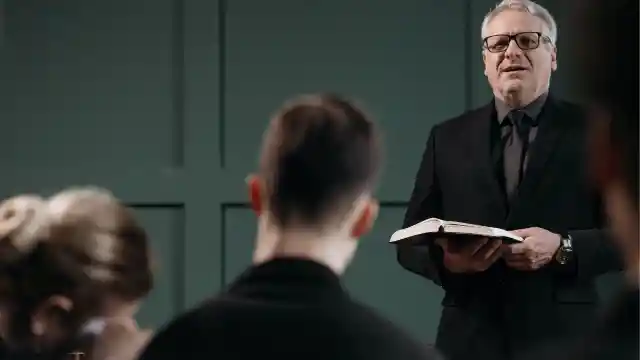

Pastor Robert listened in silence, his expression unreadable. The senior deacons exchanged uneasy glances, sensing the gravity of the accusations being leveled against them. As Shirley presented each piece of evidence, she noticed subtle shifts in the room’s atmosphere. Pastor Robert attempted to dismiss their claims as misunderstandings, but the weight of the evidence was undeniable. Sarah backed up Shirley’s assertions with additional documentation and testimony from other concerned church members. The meeting grew tense as the truth began to emerge, and it became clear that Shirley and Sarah were onto something significant.
Denial And Deflection
In response to Shirley and Sarah’s accusations, Pastor Robert and the senior deacons adopted a defensive stance. They denied any wrongdoing, attributing the discrepancies in the financial records to clerical errors and misunderstandings. Pastor Robert emphasized the importance of maintaining unity within the congregation and preserving the church’s reputation in the community. Despite their attempts to deflect blame, Shirley and Sarah remained steadfast. They presented the ledger and other evidence systematically, pointing out inconsistencies and highlighting instances where funds had been misused or misallocated.
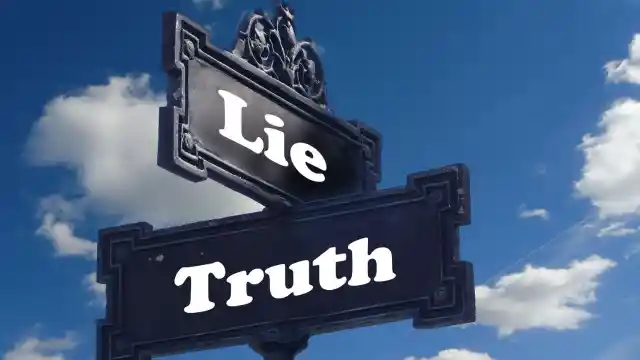
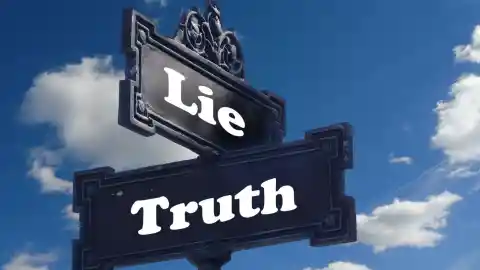
The more they pressed, the more flustered Pastor Robert and the deacons became, their facade of authority crumbling under scrutiny. As the meeting wore on, tensions reached a boiling point. Accusations flew back and forth, with emotions running high on both sides. Shirley and Sarah refused to back down, determined to see justice served for the congregation and the community. The confrontation was a pivotal moment in their quest for truth, marking a critical juncture in their battle against corruption within St. Andrews.
Revelations
During the heated confrontation, one of the senior deacons, visibly shaken, unexpectedly confessed to his role in covering up financial irregularities. His admission sent shockwaves through the room, casting a pall over the proceedings. Pastor Robert and the remaining deacons exchanged stunned looks, realizing that their carefully constructed facade was beginning to crumble. Encouraged by the deacon’s confession, Shirley and Sarah pressed for further revelations. They urged the church leadership to come clean about the full extent of their actions and to take responsibility for the harm caused to the congregation.
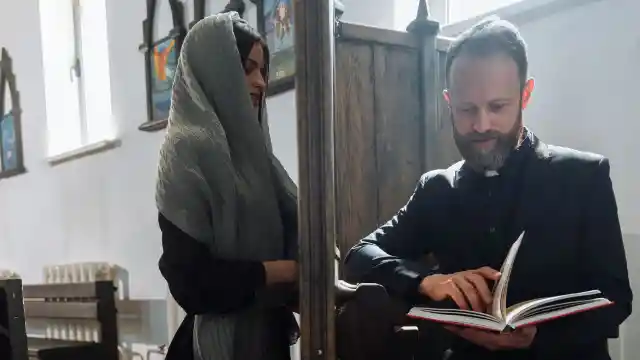
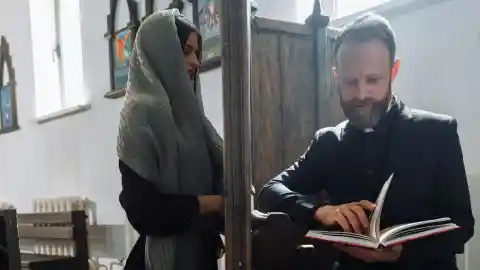
Slowly, more truths came to light as other deacons admitted to their involvement in the schemes to protect the church’s image and preserve their own positions of authority. As the meeting progressed, Shirley and Sarah felt a sense of vindication. Their efforts to uncover the truth had borne fruit, exposing the corruption that had plagued St. Andrews for years. The revelations validated their suspicions and strengthened their resolve to see justice served. The confrontation marked a turning point in the church’s history, as accountability began to replace secrecy and transparency replaced deception.
Fallout
The fallout from the confrontation spread quickly through the congregation and the community. News of the church’s corruption and the altar rule scandal made headlines, sparking outrage and disbelief among parishioners. Many expressed shock and disappointment, struggling to reconcile the revelations with their long-held beliefs about St. Andrews and its leadership. In the days that followed, Shirley and Sarah became the focal points of attention.
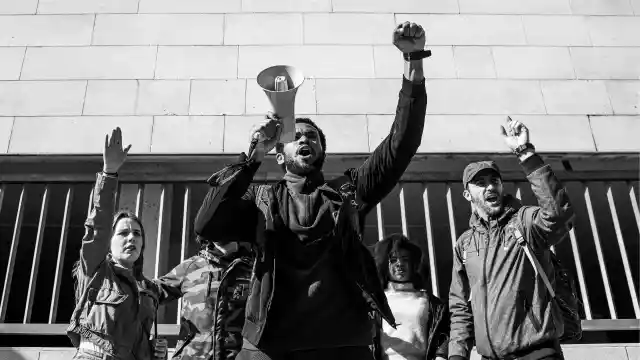
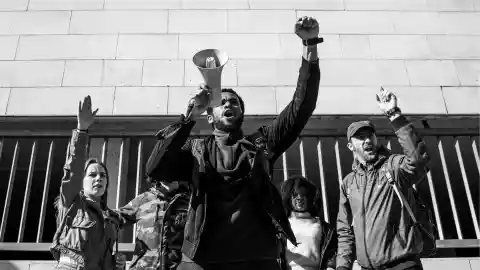
Some praised them for their courage and perseverance in exposing the truth, while others criticized them for causing division within the church. The community was divided, with factions emerging in support of and against Shirley and Sarah’s actions. Despite the backlash, Shirley and Sarah remained steadfast in their commitment to accountability and transparency. They continued to work with church members and community leaders to implement reforms and ensure that such abuses of power could never happen again. Their efforts to rebuild trust and heal the wounds caused by the scandal became their new mission, one that would shape the future of St. Andrews and its place in the community.
Reflections
Looking back, Shirley felt a profound sense of accomplishment mixed with sober reflection on the journey that had led her to this point. Uncovering the corruption within St. Andrews had been a daunting task, but one she had undertaken with unwavering determination. What started as a questioning of a seemingly innocuous tradition—the altar rule—had unraveled a complex web of deceit and abuse of power. Shirley couldn't help but marvel at how far they had come from that initial discomfort to standing at the precipice of significant change within their community. Throughout the ordeal, Shirley had relied heavily on her partnership with Sarah. Their alliance had been pivotal in gathering evidence, navigating opposition, and ultimately confronting the church leadership.


Sarah's steadfast support and shared commitment to justice had strengthened Shirley's resolve when faced with challenges and skepticism. Their journey had not only exposed wrongdoing but had also sparked conversations about accountability and transparency that were crucial for the church's future. As Shirley looked around the sanctuary now, seeing the congregation come together with a renewed sense of purpose, she felt a profound sense of hope. The revelations had caused turmoil, but they had also catalyzed a process of healing and renewal. The community was beginning to rebuild trust, not only in their church but also in their collective ability to address difficult truths and work towards a more just and compassionate future. Shirley knew there were still challenges ahead, but she was confident that the foundation they had laid would sustain them as they continued to advocate for integrity and fairness within St. Andrews.
Community Healing
In the aftermath of the revelations at St. Andrews, Shirley and Sarah focused on fostering healing and reconciliation within the community. They organized town hall meetings and open forums where parishioners could express their thoughts and concerns in a safe environment. These gatherings became platforms for honest dialogue, allowing individuals to process their emotions and share their experiences openly. The process was not without its challenges. Many in the congregation grappled with feelings of betrayal and disillusionment upon learning the extent of the church's misconduct. Shirley and Sarah listened empathetically, offering support and reassurance that they were committed to transparency and accountability moving forward.


Slowly but steadily, trust began to rebuild as community members saw tangible efforts being made to address past injustices. Together with a newly formed committee of concerned parishioners, Shirley and Sarah spearheaded initiatives to implement reforms within St. Andrews. They advocated for clearer financial oversight, improved governance structures, and enhanced mechanisms for reporting misconduct. Their goal was to ensure that the mistakes of the past would not be repeated and that the church would emerge stronger and more resilient than before.
Legal And Ethical Repercussions
As news of the scandal at St. Andrews spread beyond the church walls, legal and ethical repercussions followed. Investigations by local authorities and regulatory bodies were initiated to probe the financial irregularities and potential criminal activities uncovered during Shirley and Sarah's investigation. The legal process was complex and protracted, but Shirley remained hopeful that justice would prevail and those responsible would be held accountable under the law. Simultaneously, the ethical implications of the scandal reverberated through the broader religious community. Other churches and religious organizations took note of St. Andrews' missteps, prompting discussions about transparency, integrity, and the responsibilities of religious leaders.
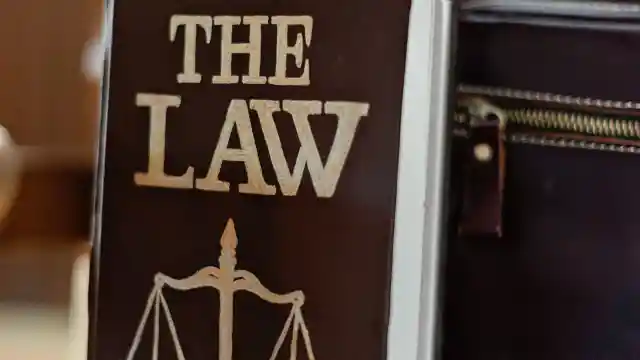
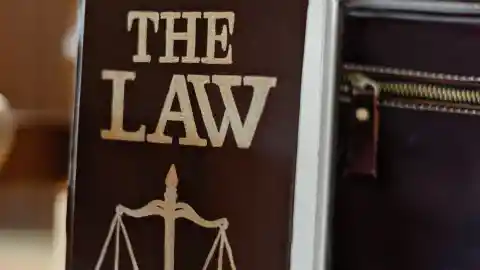
Shirley and Sarah were invited to speak at conferences and seminars, sharing their experiences and advocating for systemic changes to prevent similar abuses in other institutions. Navigating the legal and ethical aftermath was a demanding task that tested Shirley and Sarah's resolve. They faced scrutiny and criticism from some quarters, but their commitment to truth and justice remained unwavering. With each step forward in the legal process and each opportunity to influence ethical standards, they saw the potential for positive change not only within St. Andrews but across the broader religious community.
Rebuilding Trust
Rebuilding trust within St. Andrews became a central focus for Shirley and Sarah as they worked tirelessly to restore faith in the church's leadership and its mission. They implemented transparency measures, including regular financial audits and open communication channels with parishioners. These efforts were aimed at fostering accountability and ensuring that the mistakes of the past were acknowledged and learned from. The congregation responded positively to Shirley and Sarah's initiatives, gradually reengaging with church activities and participating in community events. Attendance at Sunday services increased as parishioners found solace in the renewed commitment to integrity and fairness.
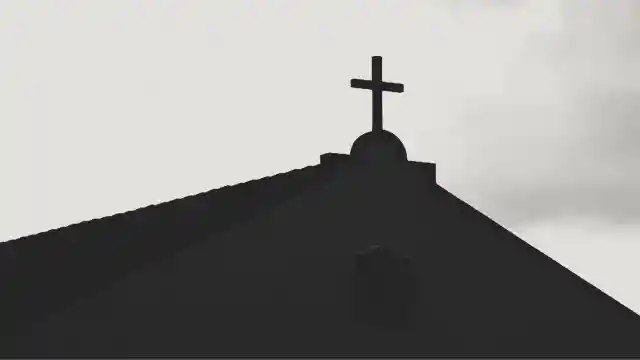

Shirley took heart in these signs of progress, knowing that their efforts were making a difference in the lives of those who called St. Andrews their spiritual home. Despite the challenges and setbacks along the way, Shirley remained optimistic about the future of St. Andrews. She believed that the church had the potential to emerge stronger from the crisis, guided by principles of compassion, honesty, and inclusivity. As they approached the one-year anniversary of the scandal, Shirley reflected on how far they had come and looked ahead with hope toward a future where St. Andrews would be known not for its past mistakes but for its commitment to justice and community.
Legacy And Lessons Learned
As the dust settled on the tumultuous year at St. Andrews, Shirley and Sarah took stock of the legacy they had created and the lessons they had learned along the way. Their journey had been fraught with challenges and uncertainties, but it had also been a testament to the power of perseverance and the importance of standing up for what was right. The legacy of their efforts was tangible. St. Andrews had undergone significant reforms, with new policies and procedures in place to prevent future misconduct. The community had rallied together, united by a shared commitment to transparency and accountability. Shirley and Sarah had become symbols of courage and integrity, inspiring others to speak out against injustice and work towards positive change in their own communities.
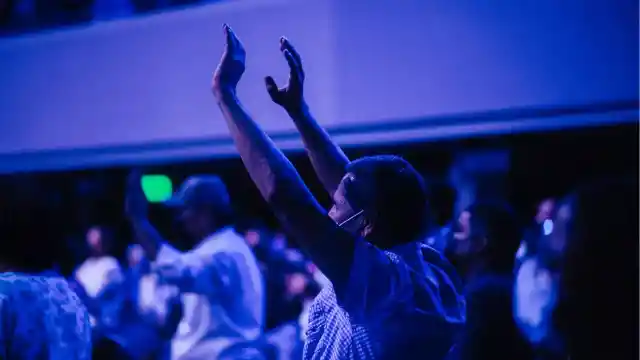

Looking back, Shirley felt a sense of fulfillment knowing that their actions had made a difference. They had confronted corruption head-on, exposed wrongdoing, and initiated a process of healing and renewal within St. Andrews. The lessons they had learned—about perseverance, solidarity, and the importance of ethical leadership—would guide them in their future endeavors, ensuring that their efforts continued to have a lasting impact. As they prepared to move forward, Shirley and Sarah remained vigilant, knowing that the work of rebuilding trust and promoting accountability was ongoing. They were grateful for the support of their fellow parishioners and community members, who had stood by them through adversity and shared in the triumphs of their journey. Together, they looked towards a future where St. Andrews would serve as a beacon of hope and a model of integrity for all who walked through its doors.
New Beginnings
With the first anniversary of the scandal approaching, St. Andrews embarked on a new chapter in its history. The church had weathered the storm of controversy and emerged with renewed purpose and commitment to its core values. Shirley and Sarah stood side by side, reflecting on the journey that had brought them to this pivotal moment. The anniversary was marked by a special service of remembrance and renewal, where the congregation came together to acknowledge the challenges of the past year and celebrate the progress made towards healing and reconciliation. Shirley delivered a heartfelt speech, expressing gratitude to everyone who had supported their efforts and reaffirming their dedication to building a brighter future for St. Andrews.


As they looked around at the faces gathered in the sanctuary, Shirley and Sarah felt a deep sense of pride in their community. The journey had been difficult, but it had also been transformative. Through their perseverance and commitment to truth, they had sparked a movement for change that had revitalized St. Andrews and strengthened its bonds of faith and fellowship. As the service concluded, Shirley and Sarah shared a moment of quiet reflection. They knew that challenges still lay ahead, but they were confident that St. Andrews was on the right path. Together, they would continue to nurture a culture of openness and accountability, ensuring that the lessons learned from their journey would guide the church towards a future filled with hope and possibility.
Community Outreach
In the months following the anniversary, Shirley and Sarah expanded their efforts beyond St. Andrews, advocating for transparency and ethical practices within other religious organizations. They spoke at conferences and seminars, sharing their experiences and urging leaders to prioritize integrity and accountability. Their message resonated with many, sparking conversations and prompting institutions to reevaluate their governance structures and financial practices. At home, they continued their work within the congregation, implementing new programs aimed at community outreach and social justice.


They organized food drives, volunteer projects, and educational workshops that engaged parishioners and strengthened bonds within the community. These initiatives not only benefited those in need but also reinforced St. Andrews' commitment to serving the broader community with compassion and empathy. Shirley and Sarah's efforts were met with enthusiasm and support from parishioners who were eager to contribute to positive change. Together, they forged a path forward, guided by the values of inclusivity, justice, and solidarity. As they looked towards the future, they were hopeful that their ongoing efforts would leave a lasting legacy of compassion and integrity within St. Andrews and beyond.
Reconciliation And Forgiveness
One of the most challenging aspects of rebuilding St. Andrews was fostering reconciliation and forgiveness among its members. Many parishioners had felt betrayed by the revelations of corruption within their church, and healing those wounds required empathy and understanding. Shirley and Sarah facilitated dialogue sessions and healing circles where individuals could share their experiences and begin the process of reconciliation. These sessions were emotional and cathartic, allowing participants to express their pain, anger, and disappointment in a supportive environment. Shirley and Sarah listened attentively, offering compassion and guidance as parishioners navigated their feelings and sought understanding.


Through these conversations, relationships were repaired, and a sense of unity began to take root once more within the congregation. Forgiveness was a central theme in their discussions, challenging parishioners to extend grace and compassion to those who had made mistakes. Shirley emphasized the importance of learning from the past while looking towards a future guided by principles of honesty and humility. Slowly but steadily, forgiveness became a transformative force within St. Andrews, paving the way for renewed hope and solidarity among its members.
Implementing Structural Reforms
Building on the momentum of reconciliation, Shirley and Sarah focused on implementing structural reforms within St. Andrews to prevent future misconduct and promote transparency. They worked closely with the newly formed governance committee to revise church policies, strengthen financial oversight, and establish clear guidelines for decision-making and accountability. These reforms were met with broad support from parishioners who recognized the importance of safeguarding the church's integrity.


Shirley and Sarah held town hall meetings to explain the changes and solicit feedback, ensuring that the reforms reflected the collective values and aspirations of the congregation. Through collaborative effort and open communication, they fostered a sense of ownership and responsibility among all members of St. Andrews. As the reforms took effect, Shirley and Sarah observed positive changes within the church community. Trust continued to grow, and parishioners felt empowered knowing that their voices were heard and their concerns addressed. Shirley remained vigilant, knowing that maintaining transparency and accountability would require ongoing commitment and vigilance from everyone involved.
Healing Through Service
To further promote healing and unity, Shirley and Sarah encouraged parishioners to engage in acts of service and outreach to the broader community. They organized volunteer opportunities at local shelters, community centers, and hospitals, allowing individuals to channel their energies towards positive contributions. These efforts not only benefited those in need but also strengthened the bonds of empathy and compassion within St. Andrews. Participation in service activities became a hallmark of St. Andrews' renewed commitment to social justice and community engagement. Parishioners of all ages volunteered their time and talents, creating meaningful connections and making a tangible difference in the lives of others.


Shirley and Sarah were inspired by the generosity and spirit of service that permeated their congregation, reinforcing their belief in the transformative power of collective action. Through these initiatives, St. Andrews became known not only for its commitment to spiritual growth but also for its dedication to making a positive impact in the wider world. Shirley and Sarah saw firsthand how acts of kindness and compassion could bridge divides and bring healing to individuals and communities alike. Their vision of a church united in service and solidarity was becoming a reality, one volunteer project at a time.
Celebrating Milestones
As the reforms at St. Andrews continued to take root, Shirley and Sarah took time to celebrate milestones and achievements along the way. They organized special events and ceremonies to commemorate the progress made in rebuilding trust, promoting transparency, and fostering unity within the congregation. One such milestone was the dedication of a new community garden, a project initiated by parishioners to provide fresh produce for local food banks.


The garden symbolized St. Andrews' commitment to sustainability, community service, and nurturing the bonds of fellowship among its members. Another significant celebration was the installation of a memorial plaque honoring the resilience and courage of those who had spoken out against injustice and advocated for positive change within the church. The plaque served as a reminder of the challenges overcome and the progress yet to be made on the journey towards reconciliation and renewal.
Educational Initiatives
Recognizing the importance of education in fostering informed and engaged parishioners, Shirley and Sarah launched a series of educational initiatives at St. Andrews. They hosted workshops and seminars on topics such as ethical leadership, financial stewardship, and the role of faith communities in promoting social justice. These educational programs empowered parishioners with knowledge and skills to actively participate in church governance and decision-making processes.


They promoted a culture of lifelong learning and critical thinking, encouraging individuals to ask questions, challenge assumptions, and contribute meaningfully to the church's mission. The response from parishioners was overwhelmingly positive, with many expressing gratitude for the opportunity to deepen their understanding of issues that were important to them. Shirley and Sarah were encouraged by the enthusiasm and engagement shown by the congregation, knowing that informed and empowered members were key to sustaining the positive changes underway at St. Andrews.
Embracing Diversity And Inclusion
As St. Andrews continued its journey of renewal, Shirley and Sarah emphasized the importance of embracing diversity and inclusion within the congregation. They advocated for initiatives that celebrated different cultural traditions, perspectives, and experiences, fostering a sense of belonging for all parishioners regardless of background or identity. One of their initiatives was the establishment of a diversity committee tasked with promoting multicultural understanding and addressing issues of equity and inclusion within the church.


The committee organized events such as cultural celebrations, dialogue sessions on social justice, and awareness campaigns on the importance of diversity in building a strong and vibrant community. Through these efforts, St. Andrews became a welcoming and inclusive space where diversity was celebrated as a source of strength and enrichment. Parishioners from diverse backgrounds found common ground in their shared values of compassion, justice, and faith, contributing to a sense of unity and solidarity within the congregation.
Renewed Outreach Efforts
Building on the success of their community outreach programs, Shirley and Sarah expanded their efforts to reach marginalized and underserved populations in the wider community. They collaborated with local organizations and charities to support initiatives that addressed issues such as homelessness, hunger, and access to healthcare. One of their most impactful projects was a partnership with a nearby homeless shelter to provide meals and essential supplies to individuals and families in need.


Parishioners volunteered their time to prepare and serve meals, offering compassion and support to those facing difficult circumstances. The outreach efforts strengthened St. Andrews' reputation as a church dedicated not only to spiritual growth but also to social responsibility and compassionate action. Shirley and Sarah were heartened by the generosity and commitment of their congregation, who continued to demonstrate their willingness to make a positive difference in the lives of others.
Strengthening Community Partnerships
Recognizing the importance of collaboration in addressing complex social issues, Shirley and Sarah focused on strengthening partnerships with community organizations, local businesses, and government agencies. They participated in coalition-building efforts aimed at addressing systemic challenges such as poverty, inequality, and environmental sustainability. Through these partnerships, St. Andrews played a proactive role in advocating for policy changes and initiatives that promoted social justice and economic empowerment.


Shirley and Sarah leveraged their position to amplify the voices of marginalized communities and advocate for solutions that prioritized human dignity and well-being. The partnerships also enriched St. Andrews' outreach programs, providing access to resources, expertise, and support networks that enhanced the church's capacity to make a meaningful impact. Shirley and Sarah were inspired by the collaborative spirit of their community partners, who shared their commitment to creating a more just and equitable society.
Building Bridges
As St. Andrews continued to grow and evolve, Shirley and Sarah focused on building bridges with neighboring churches and faith communities. They organized interfaith dialogues, joint worship services, and collaborative service projects that promoted mutual understanding and cooperation among people of different religious backgrounds. These initiatives fostered a spirit of unity and solidarity, transcending religious differences to focus on shared values and common goals.


Shirley and Sarah believed that building bridges across faith communities was essential to creating a more inclusive and compassionate society where all individuals were valued and respected. The efforts to build bridges with neighboring churches were met with enthusiasm and support from parishioners who embraced the opportunity to forge meaningful connections with their neighbors. Through dialogue and collaboration, St. Andrews became a beacon of interfaith harmony and cooperation, demonstrating the transformative power of unity and mutual respect.
Environmental Stewardship
Deepening their commitment to environmental stewardship, Shirley and Sarah launched initiatives at St. Andrews aimed at promoting sustainability and responsible stewardship of the Earth's resources. They implemented recycling programs, energy-efficient upgrades, and initiatives to reduce the church's carbon footprint. These efforts reflected St. Andrews' commitment to caring for God's creation and preserving the environment for future generations. Parishioners enthusiastically supported the initiatives, volunteering their time and resources to ensure their success. Together, they cultivated a culture of environmental responsibility within the congregation, recognizing the interconnectedness of faith and environmental justice. Shirley and Sarah organized educational workshops and guest speakers to raise awareness about climate change, sustainability practices, and the theological basis for environmental stewardship.
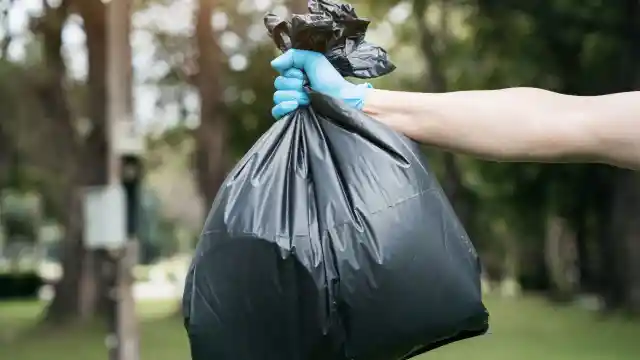
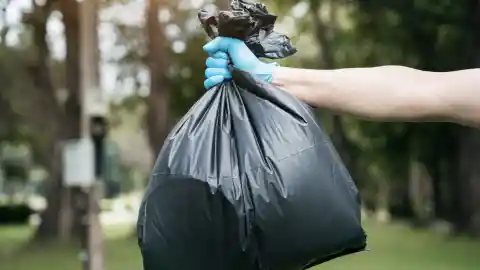
Their efforts extended beyond the church grounds as they collaborated with local environmental organizations and participated in community clean-up events. They advocated for policies that prioritized environmental protection and sustainability, inspiring others to take action in their own lives and communities. Through these initiatives, St. Andrews became a leader in environmental stewardship, demonstrating how faith-based communities could play a vital role in addressing global environmental challenges. Shirley and Sarah were proud of the positive impact their efforts were having, knowing that they were honoring their commitment to caring for creation and leaving a legacy of environmental responsibility for future generations.
Youth And Family Programs
Recognizing the importance of nurturing the next generation of parishioners, Shirley and Sarah expanded youth and family programs at St. Andrews. They developed age-appropriate religious education curricula, youth groups, and family-oriented events that engaged children, teenagers, and parents in meaningful ways. The programs emphasized values such as kindness, empathy, and social responsibility, providing young people with opportunities to grow spiritually and develop strong moral foundations.
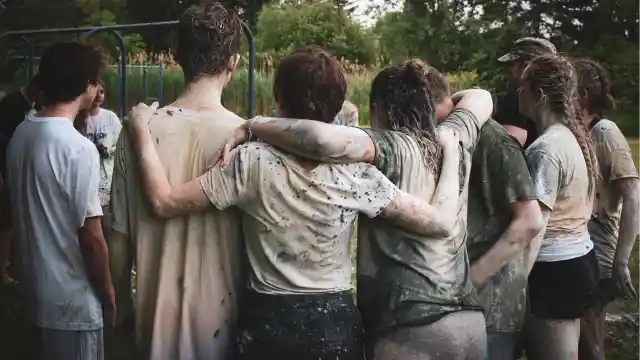

Shirley and Sarah worked closely with parents and volunteers to create a supportive and inclusive environment where youth felt valued and empowered. As participation in youth and family programs grew, so did the sense of community and belonging within St. Andrews. Families found a welcoming space where their children could explore their faith, build friendships, and contribute to the church's mission of love and service. Shirley and Sarah were encouraged by the enthusiasm and dedication of volunteers who invested their time and energy in nurturing the spiritual growth of the next generation.
Reflecting On The Journey
As Shirley and Sarah approached the conclusion of their transformative journey at St. Andrews, they took time to reflect on the profound impact their efforts had made. They looked back with gratitude for the courage and resilience of parishioners who had embraced change and worked together to rebuild their faith community. The journey had been marked by challenges and triumphs, setbacks and successes, but through it all, Shirley and Sarah had remained steadfast in their commitment to truth, justice, and compassion.


They had learned valuable lessons about leadership, perseverance, and the power of community to effect positive change. Looking towards the future, Shirley and Sarah were hopeful for St. Andrews' continued growth and evolution. The church had emerged stronger and more united than ever, guided by a shared commitment to faith, love, and service. As they prepared to pass the torch to new leaders, Shirley and Sarah felt confident that St. Andrews was well-equipped to continue its mission of spreading God's love and transforming lives.
Passing The Torch
In a poignant ceremony attended by parishioners old and new, Shirley and Sarah passed the torch of leadership to a new generation of stewards at St. Andrews. They expressed gratitude for the support and dedication of the congregation, who had journeyed with them through times of uncertainty and renewal. The transition marked a new chapter in St. Andrews' history, one shaped by the lessons learned and the values instilled during Shirley and Sarah's tenure. The incoming leadership team embraced the vision of a church grounded in faith, integrity, and inclusivity, pledging to build upon the foundation laid by their predecessors. Shirley and Sarah looked on with pride as the community gathered to celebrate the church's resilience and resilience and resilience and commitment to its mission.
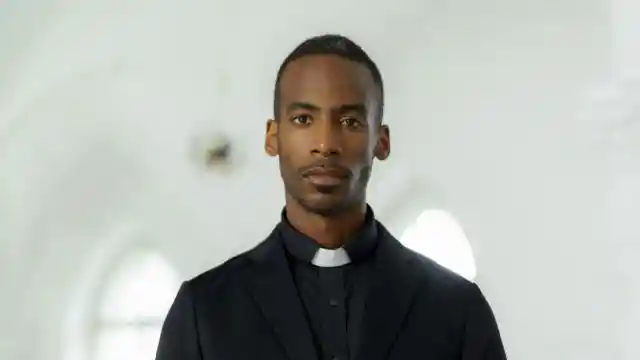
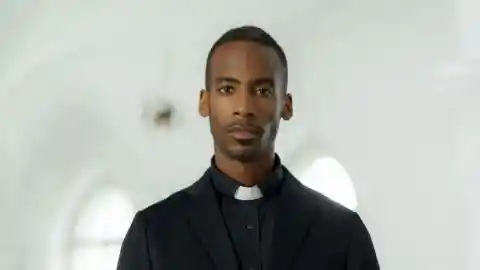
They were humbled by the outpouring of gratitude from parishioners who had been touched by their leadership and inspired by their dedication to justice and transparency. As they stepped back from their formal roles, Shirley and Sarah felt a sense of fulfillment, knowing that St. Andrews was in capable hands and poised to continue making a positive impact in the world. The ceremony was a celebration of continuity and renewal, as the congregation reaffirmed its commitment to the core values that had guided them through adversity. Shirley and Sarah offered words of encouragement and wisdom to the new leadership team, urging them to stay true to their principles and to always prioritize the well-being of the community they served. With hearts full of gratitude and hope for the future, Shirley and Sarah took their leave from St. Andrews, knowing that their journey was far from over. They carried with them the memories of the challenges they had faced and the triumphs they had achieved, confident that their efforts had left a lasting legacy of faith, courage, and compassion.
Looking Ahead
As Shirley and Sarah embarked on new chapters in their lives, they remained connected to the spirit of St. Andrews and the community they had served so faithfully. They continued to advocate for justice and integrity in their respective endeavors, inspired by the lessons learned and the relationships forged during their time at the church. St. Andrews continued to thrive under the leadership of the new stewardship team, building on the foundation of transparency, inclusivity, and social responsibility established during Shirley and Sarah's tenure. The church remained a beacon of hope and a source of strength for its members, embodying the values of faith and service that had guided its journey.
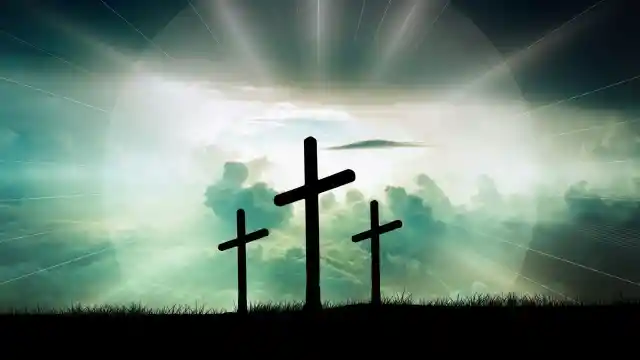

Looking ahead, Shirley and Sarah were optimistic about the future of St. Andrews and the impact it would continue to have in the community. They knew that the seeds of change they had planted would continue to grow and flourish, nurturing a legacy of compassion, justice, and love for generations to come. As they reflected on their shared journey, Shirley and Sarah were grateful for the opportunity to have been part of St. Andrews' transformational story. They cherished the friendships forged, the lessons learned, and the faith that had sustained them through every challenge and triumph. With hearts full of gratitude and hope, they embraced the future, knowing that their time at St. Andrews had prepared them for whatever lay ahead.